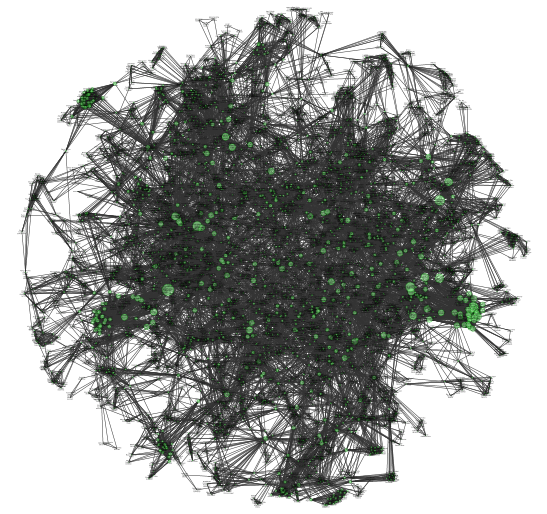A game-theory modeling approach to utility and strength of interactions dynamics in biomedical research social networks.
Collaboration has become a cornerstone in biomedical research today. In contrast to physics which has a long history and experience in collaborative projects, biology is only recently becoming an evermore collaborative discipline.
We're exploring the effect of collaboration on the distribution of players' access to resources from other players in the network and the distribution of the strength of interactions among them.
We implemented two games played simultaneously: one for maximizing individual utility based on the iterated Prisoner's Dilemma; the other, a coordination game for maximizing the connection strength between players. We are interested in how they affect each other in the context of a network of scientific collaboration under the idea that while researchers are interested in maximizing their individual utilities, they also know that it is important to invest in building collaborative relationships.
We tested our simulation on a biomedical research community network of M'exico and compared the results with an Erd"{o}s-Reny'i, a Watts-Strogatz small-world and Barab'asi-Albert topologies. Different topologies display different utility and interaction strength distributions.
Moreover, the distribution of utility and interaction strength in the researchers network is similar to that of Barab'asi-Albert and Watts-Strogatz topologies, respectively.
We believe that utility distribution in the researchers network suggests that there are socio-cultural mechanisms governing the network that produce an asymmetric distribution of resources. The high distribution of strong interactions might reflect some sort of subordination among researchers by which they are morally obliged to cooperate by the same socio-cultural mechanisms. The range around the threshold that regulates the decision to cooperate or defect according to the agent's historical balance between utility and strength of collaborative relationships and carrying capacity of the system is small, suggesting that there is a region in which a phase transition takes place from a population of cooperators to a population of defectors.
Simulations like this may help to develop science policies to promote fair distribution of resources.


